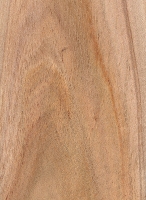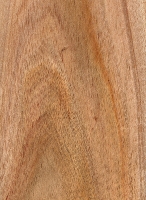 |
Common Name(s): Monkeythorn Scientific Name: Senegalia galpinii (syn. Acacia galpinii) Distribution: Southern Africa Tree Size: 65-100 ft (20-30 m) tall, 3 ft (1 m) trunk diameter Average Dried Weight: 50 lbs/ft3 (800 kg/m3) Specific Gravity (Basic, 12% MC): .64, .80 Janka Hardness: 2,040 lbf (9,070 N) Modulus of Rupture: 16,240 lbf/in2 (112.0 MPa) Elastic Modulus: 1,905,000 lbf/in2 (13.14 GPa) Crushing Strength: 8,850 lbf/in2 (61.0 MPa) Shrinkage: No data available |
Color/Appearance: No data available.
Grain/Texture: No data available.
Endgrain: No data available.
Rot Resistance: No data available.
Workability: No data available.
Odor: No characteristic odor.
Allergies/Toxicity: Besides the standard health risks associated with any type of wood dust, no further health reactions have been associated with Monkeythorn. See the articles Wood Allergies and Toxicity and Wood Dust Safety for more information.
Pricing/Availability: No data available.
Sustainability: This wood species is not listed in the CITES Appendices or on the IUCN Red List of Threatened Species.
Common Uses: No data available.
Comments: This thorny tree is supposedly named for the tendency of monkeys to seek refuge in the tree (whose seeds and pods also provide the animals with food). It’s among the largest Acacia species naturally found in South Africa.
- Australian Blackwood (Acacia melanoxylon)
- Black Wattle (Acacia mearnsii)
- Gidgee (Acacia cambagei)
- Koa (Acacia koa)
- Mangium (Acacia mangium)
- Raspberry Jam (Acacia acuminata)
Vachellia genus:
Scans/Pictures: There are currently no pictures of this exact wood species, but a similar species within the Acacia genus is being substituted (A. mearnsii). If you’d like to contribute a wood sample of this specific species to be scanned, (even small pieces of veneer can be sent), please use the contact form.
 |
 |




